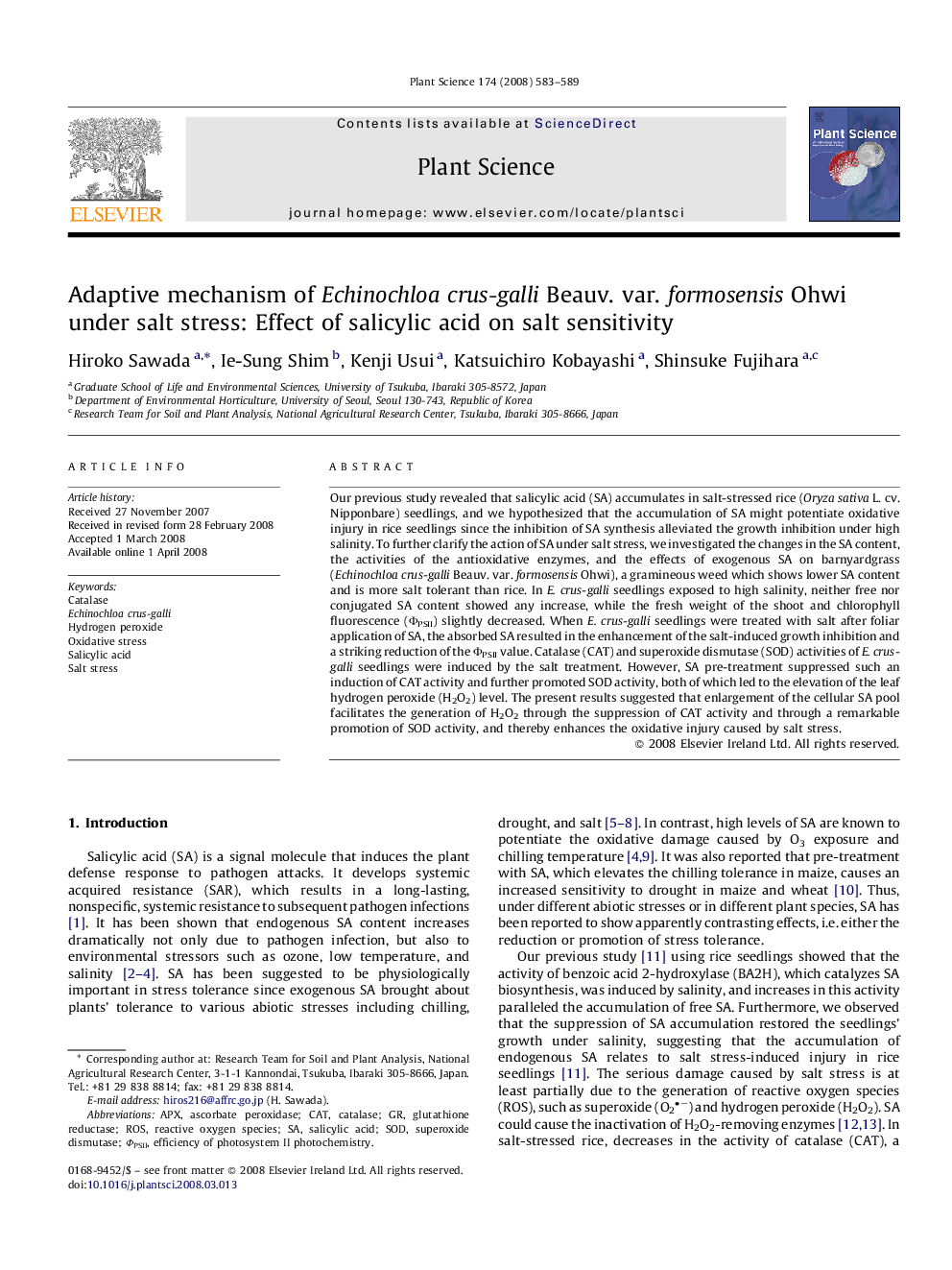| Article ID | Journal | Published Year | Pages | File Type |
|---|---|---|---|---|
| 2018287 | Plant Science | 2008 | 7 Pages |
Abstract
Our previous study revealed that salicylic acid (SA) accumulates in salt-stressed rice (Oryza sativa L. cv. Nipponbare) seedlings, and we hypothesized that the accumulation of SA might potentiate oxidative injury in rice seedlings since the inhibition of SA synthesis alleviated the growth inhibition under high salinity. To further clarify the action of SA under salt stress, we investigated the changes in the SA content, the activities of the antioxidative enzymes, and the effects of exogenous SA on barnyardgrass (Echinochloa crus-galli Beauv. var. formosensis Ohwi), a gramineous weed which shows lower SA content and is more salt tolerant than rice. In E. crus-galli seedlings exposed to high salinity, neither free nor conjugated SA content showed any increase, while the fresh weight of the shoot and chlorophyll fluorescence (ΦPSII) slightly decreased. When E. crus-galli seedlings were treated with salt after foliar application of SA, the absorbed SA resulted in the enhancement of the salt-induced growth inhibition and a striking reduction of the ΦPSII value. Catalase (CAT) and superoxide dismutase (SOD) activities of E. crus-galli seedlings were induced by the salt treatment. However, SA pre-treatment suppressed such an induction of CAT activity and further promoted SOD activity, both of which led to the elevation of the leaf hydrogen peroxide (H2O2) level. The present results suggested that enlargement of the cellular SA pool facilitates the generation of H2O2 through the suppression of CAT activity and through a remarkable promotion of SOD activity, and thereby enhances the oxidative injury caused by salt stress.
Keywords
Related Topics
Life Sciences
Agricultural and Biological Sciences
Plant Science
Authors
Hiroko Sawada, Ie-Sung Shim, Kenji Usui, Katsuichiro Kobayashi, Shinsuke Fujihara,
